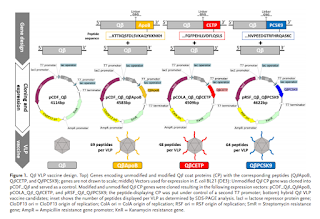Heart disease has been the number one cause of death globally for a long time. Through the use of vaccines and related technologies, humans have the ability to prime and adjust the human immune system to leverage this powerful agent to effect changes within the body. One novel approach is to use this system to reduce arterial blockage and heart disease. Researchers at University of California-San Diego used PLGA (AP041) from PolySciTech (www.polyscitech.com) to create time-delayed antigen release systems to create a vaccine against cardiovascular disease by targeting the immune system against cholesterol-promoting proteins. This holds promise to provide for therapy against heart disease which is currently the most common cause of death. Read more: Ortega‐Rivera, Oscar A., Jonathan K. Pokorski, and Nicole F. Steinmetz. "A Single‐Dose, Implant‐Based, Trivalent Virus‐like Particle Vaccine against “Cholesterol Checkpoint” Proteins." Advanced Therapeutics: 2100014. https://onlinelibrary.wiley.com/doi/abs/10.1002/adtp.202100014
“Cardiovascular disease is the number one cause of death globally. Lowering cholesterol levels in plasma is the mainstay therapy; however lifelong treatment and adverse effects call for improved therapeutic interventions. A trivalent vaccine candidate targeting proprotein convertase subtilisin/kexin-9 (PCSK9), apolipoprotein B (ApoB), and cholesteryl ester transfer protein (CETP) is developed. Vaccine candidates are developed using bacteriophage Q𝜷-based virus-like particles (VLPs) displaying antigens of PCKS9, ApoB, and CETP, respectively. Vaccine candidate mixtures are formulated as slow-release PLGA:VLP implants using hot-melt extrusion. The delivery of the trivalent vaccine candidate via the implant produced antibodies against the cholesterol checkpoint proteins at levels comparable to a three-dose injection schedule with soluble mixtures. The reduction in PCSK9 and ApoB levels in plasma, inhibition of CETP (in vitro), and total plasma cholesterol decrease is achieved. Altogether, a platform technology for a single-dose multi-agent proteins is presented.”

No comments:
Post a Comment